Entry Database : PDB / ID : 3w32Title EGFR kinase domain complexed with compound 20a Epidermal growth factor receptor Keywords / / / / / / Function / homology Function Domain/homology Component
/ / / / / / / / / / / / / / / / / / / / / / / / / / / / / / / / / / / / / / / / / / / / / / / / / / / / / / / / / / / / / / / / / / / / / / / / / / / / / / / / / / / / / / / / / / / / / / / / / / / / / / / / / / / / / / / / / / / / / / / / / / / / / / / / / / / / / / / / / / / / / / / / / / / / / Biological species Homo sapiens (human)Method / / / Resolution : 1.8 Å Authors Sogabe, S. / Kawakita, Y. Journal : Bioorg.Med.Chem. / Year : 2013Title : Design and synthesis of novel pyrimido[4,5-b]azepine derivatives as HER2/EGFR dual inhibitorsAuthors : Kawakita, Y. / Seto, M. / Ohashi, T. / Tamura, T. / Yusa, T. / Miki, H. / Iwata, H. / Kamiguchi, H. / Tanaka, T. / Sogabe, S. / Ohta, Y. / Ishikawa, T. History Deposition Dec 7, 2012 Deposition site / Processing site Revision 1.0 Mar 6, 2013 Provider / Type Revision 1.1 Aug 14, 2013 Group Revision 1.2 Nov 8, 2023 Group Data collection / Database references ... Data collection / Database references / Derived calculations / Refinement description Category chem_comp_atom / chem_comp_bond ... chem_comp_atom / chem_comp_bond / database_2 / pdbx_initial_refinement_model / struct_ref_seq_dif / struct_site Item _database_2.pdbx_DOI / _database_2.pdbx_database_accession ... _database_2.pdbx_DOI / _database_2.pdbx_database_accession / _struct_ref_seq_dif.details / _struct_site.pdbx_auth_asym_id / _struct_site.pdbx_auth_comp_id / _struct_site.pdbx_auth_seq_id
Show all Show less
 Open data
Open data Basic information
Basic information Components
Components Keywords
Keywords Function and homology information
Function and homology information Homo sapiens (human)
Homo sapiens (human) X-RAY DIFFRACTION /
X-RAY DIFFRACTION /  SYNCHROTRON /
SYNCHROTRON /  MOLECULAR REPLACEMENT / Resolution: 1.8 Å
MOLECULAR REPLACEMENT / Resolution: 1.8 Å  Authors
Authors Citation
Citation Journal: Bioorg.Med.Chem. / Year: 2013
Journal: Bioorg.Med.Chem. / Year: 2013 Structure visualization
Structure visualization Molmil
Molmil Jmol/JSmol
Jmol/JSmol Downloads & links
Downloads & links Download
Download 3w32.cif.gz
3w32.cif.gz PDBx/mmCIF format
PDBx/mmCIF format pdb3w32.ent.gz
pdb3w32.ent.gz PDB format
PDB format 3w32.json.gz
3w32.json.gz PDBx/mmJSON format
PDBx/mmJSON format Other downloads
Other downloads 3w32_validation.pdf.gz
3w32_validation.pdf.gz wwPDB validaton report
wwPDB validaton report 3w32_full_validation.pdf.gz
3w32_full_validation.pdf.gz 3w32_validation.xml.gz
3w32_validation.xml.gz 3w32_validation.cif.gz
3w32_validation.cif.gz https://data.pdbj.org/pub/pdb/validation_reports/w3/3w32
https://data.pdbj.org/pub/pdb/validation_reports/w3/3w32 ftp://data.pdbj.org/pub/pdb/validation_reports/w3/3w32
ftp://data.pdbj.org/pub/pdb/validation_reports/w3/3w32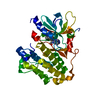

 Links
Links Assembly
Assembly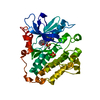
 Components
Components Homo sapiens (human) / Gene: EGFR, ERBB, ERBB1, HER1 / Plasmid: pFastBac1 / Cell line (production host): Sf9 / Production host:
Homo sapiens (human) / Gene: EGFR, ERBB, ERBB1, HER1 / Plasmid: pFastBac1 / Cell line (production host): Sf9 / Production host: 
 X-RAY DIFFRACTION / Number of used crystals: 1
X-RAY DIFFRACTION / Number of used crystals: 1  Sample preparation
Sample preparation SYNCHROTRON / Site:
SYNCHROTRON / Site:  ALS
ALS  / Beamline: 5.0.3 / Wavelength: 0.97649 Å
/ Beamline: 5.0.3 / Wavelength: 0.97649 Å Processing
Processing MOLECULAR REPLACEMENT
MOLECULAR REPLACEMENT Movie
Movie Controller
Controller



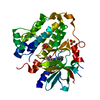

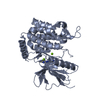
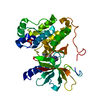
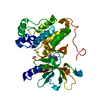

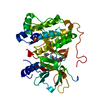

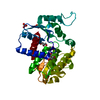

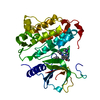
 PDBj
PDBj

















